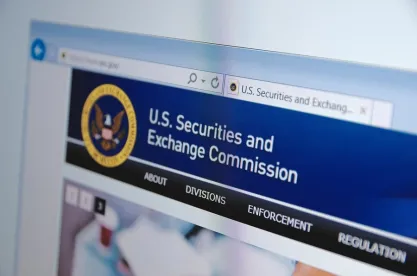On May 9, the Securities and Exchange Commission proposed amendments to the accelerated filer and large accelerated filer definitions in Securities Exchange Act of 1934 Rule 12b-2. The proposed amendments would exclude certain lower-revenues companies from being classified as accelerated or large accelerated filers, which would reduce costs for those companies.
Background
Reporting companies are classified into three categories: large accelerated filers, accelerated filers and non-accelerated filers. The independent auditors of large accelerated and non-accelerated filers, but not of non-accelerated filers, must attest to, and report on, management’s assessment of the effectiveness of their internal control over financing reporting (ICFR). This attestation requirement results in increased costs for accelerated and large accelerated filers and in shorter 10-K and 10-Q filing deadlines for quarterly and annual reports that do not apply to non-accelerated filers.
Currently, a company is classified as an accelerated filer if, at the end of its fiscal year:
-
the company had an aggregate market value of the common equity held by its non-affiliates of $75 million or more, but less than $700 million, as of the last business day of its most recent second fiscal quarter;
-
the company had been subject to the requirements of Section 13(a) or Section 15(d) of the Securities Exchange Act for a period of at least 12 calendar months; and
-
the company had filed at least one annual report pursuant to Section 13(a) or Section 15(d) of the Securities Exchange Act.
In addition to satisfying the second and third conditions stated above, a large accelerated filer also must have an aggregate market value of common equity held by its non-affiliates of $700 million or more.
Rule 12b-2 currently defines a smaller reporting company (SRC) as a company that is not an investment company, an asset-backed company or a majority-owned subsidiary of a non-SRC parent that:
-
has a public float of less than $250 million; or
-
has annual revenues of less than $100 million and either no public float or a public float of less than $700 million.
Some companies may be classified as both SRCs and accelerated or large accelerated filers, thus having to satisfy the IFRC auditor attestation requirement discussed above. The following are highlights of the amendments the SEC has proposed to remedy this issue.
Proposed Amendments
Exclusion of Low-Revenue SRCs from Accelerated and Large Accelerated Filer Definitions
The SEC has proposed adding a new condition to the definitions of accelerated and large accelerated filers in order to exclude those companies that are eligible to be an SRC under the SRC revenue test. As a result, a company that has a public float of between $75 million and $250 million as of its most recently completed second fiscal quarter would not be classified as an accelerated filer if its annual revenues in the most recent fiscal year for which audited financials are available is less than $100 million. This proposed amendment should significantly decrease the number of companies that are subject to the ICFR auditor attestation requirement.
Transition Thresholds for Exiting Accelerated and Large Accelerated Filer Status
The SEC also has proposed an amendment to Rule 12b-2 that would increase the public float thresholds for accelerated and large accelerated filers becoming non-accelerated filers from $50 million to $60 million, and for exiting large accelerated filer status from $500 million to $560 million. In addition, the SEC has proposed adding the SRC revenue test to determine whether a company should still be classified as an accelerated or large accelerated filer. A company whose public float fell below $60 million, or whose annual revenues fell below the SRC revenue test, would no longer be classified as an accelerated filer and, accordingly, would no longer be subject to the ICFR auditor attestation requirement.
Conclusion
The SEC is accepting comments on these proposed amendments. The SEC’s proposed amendments are available here.





 />i
/>i

